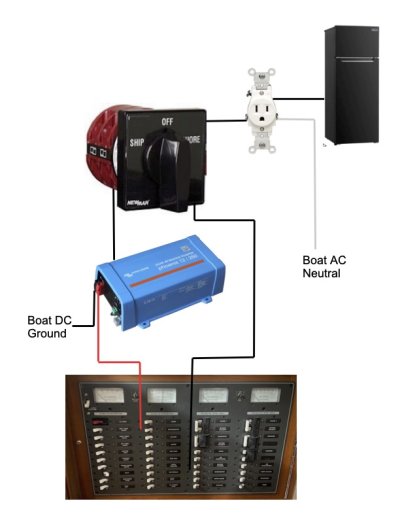HeadedToTexas
Guru
I am ready for cold beer and hard ice cream, so I finally gave up on my N'ercold DE0061 refrigerator and am going to an AC only model. My plan is to power the new fridge from two sources, AC via shore power or generator, and my house battery bank via a dedicated inverter.
The right Victron Phoenix will get power from the old Refrigerator breaker on the DC panel. I hope to keep switching power supplies as simple as possible, but also protect myself from stupid actions. I could simply wire the AC sides to the same outlet and plug the fridge in, then power up only one breaker at a time.
Protecting myself from stupid actions would seem to dictate a switch such as the one below sitting between the supplies and the outlet. Is there a more conventional or ABYC way of wiring it?
The right Victron Phoenix will get power from the old Refrigerator breaker on the DC panel. I hope to keep switching power supplies as simple as possible, but also protect myself from stupid actions. I could simply wire the AC sides to the same outlet and plug the fridge in, then power up only one breaker at a time.
Protecting myself from stupid actions would seem to dictate a switch such as the one below sitting between the supplies and the outlet. Is there a more conventional or ABYC way of wiring it?

